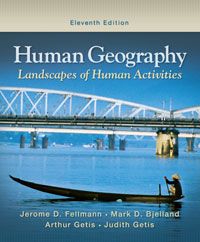1 A) gable front New England B) four-over-four St. Lawrence Valley C) classic I Hudson Valley D) central hall Tidewater 2 A) It is the least distinctive and most intermixed of the original eastern culture regions. B) The interior contains evidence of artifacts carried only by migrants from the Upland and Lowland South. C) It is the most Americanized of the culture regions. D) It is a conglomeration of inputs from the Upland South, Northeast, and Middle Atlantic Regions. 3 A) New England and the St. Lawrence Valley B) the Hudson Valley and Chesapeake region C) Midwest and rural West D) Upland South and Southern Appalachia 4 A) cuisine B) folk music C) folklore D) architecture 5 A) Mormons of Utah B) Native Americans of the West C) Midwest Amish D) Louisiana Cajuns 6 A) Cigarette smoking and snack nut consumption are high in the same region of the country. B) Membership in fraternal orders tends to concentrate in the urban East. C) Television viewing of baseball, snack nut consumption, and cigarette smoking all seem to be popular in the North. D) Snack nut eating and membership in fraternal orders show a strong spatial association. 7 A) Upland South B) Midwest C) Lowland South D) Mid-Atlantic 8 A) Its diffusion is marked by the nearly simultaneous adoption over wide areas of both material and nonmaterial elements. B) Recognizable culture hearths and migration paths are definable for most popular culture elements. C) Many elements of popular culture are oriented toward the automobile. D) Both material and nonmaterial elements of popular culture are subject to the same widespread uniformities. 9 A) steamboat. B) television set. C) printing press. D) shopping mall. 10 A) Uniformity is substituted for differentiation. B) The individual is liberated through exposure to a broader range of available opportunities. C) It obliterates locally distinctive lifestyles. D) Change in general and the adoption of innovations proceed slowly. 11 A) Upland South. B) Lowland South. C) Midwest. D) North. 12 A) Midwest. B) North. C) Upland South. D) Mid-Atlantic. 13 A) country. B) black folk music. C) bluegrass. D) jazz. 14 A) a guide to settlement periods and stages. B) evidence of the resources and environmental conditions the settlers found. C) an indicator of the folk cultural traditions of farm populations. D) an indicator of the barn types prevalent at any time period. 15 A) Hudson Valley, Delaware Valley, St. Lawrence Valley B) Middle Atlantic, Southern Tidewater, Mississippi Delta C) New England, Middle Atlantic, Lower Chesapeake D) St. Lawrence Valley, New England, Southern Tidewater 16 A) the grenier house of rural Louisiana B) the Spanish adobe house C) the four-over-four house of the Delaware Valley D) the saltbox house of New England 17 A) of the lack of traditional building materials. B) of differences in climate and ethnic cultural mix. C) the North was more affluent than the South. D) the South was settled later than the North, and its housing evolved from existing plans. 18 A) Chesapeake Bay. B) New England. C) Hudson Valley. D) Delaware Valley. 19 A) Hudson Valley – rural southern England B) St. Lawrence Valley – northwestern France C) Upper Canada – England and Scotland D) Delaware Valley – England, Scotland, Sweden, Germany 20 A) folk songs B) tools C) furniture D) musical instruments 21 A) Until recent times, most societies have been intimately and largely concerned with food production. B) In most world regions, ethnic and cultural intermixture is immediately apparent. C) Most areas of the world have been occupied by a complex mix of peoples migrating in search of food and carrying food habits and preferences with them in their migrations. D) Food habits are not just matters of sustenance but are intimately connected with the totality of culture or custom. 22 A) minstrel show ragtime and blues – jazz B) Scottish bagpipe sound and church congregation singing – bluegrass C) Southern white ancestral folk music – country music D) African-American folk songs of the rural South – urban blues 23 A) its origin in the mass transit era of the early 20th century. B) its complete absence in the southeastern United States. C) the fact that Americans spend more of their time in malls than anywhere else except home and work. D) their complete replacement of traditional central business districts in older medium-sized and large cities. 24 A) its preservation as behavioral norms that set a recognizable national, social, or religious minority group apart from a majority culture. B) its being a way of life of the mass population, reducing regional folk and ethnic differences. C) its geographical isolation and tradition, which keeps it separate, distinctive, and unchanging. D) its being exclusively rural as opposed to urban. 25 A) expansion diffusion. B) relocation diffusion. C) syncretism. D) hierarchical diffusion.





